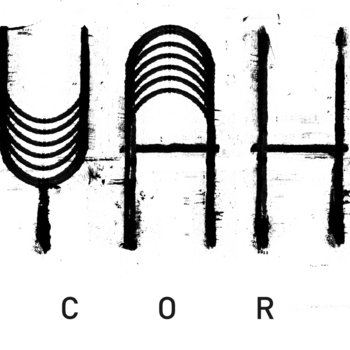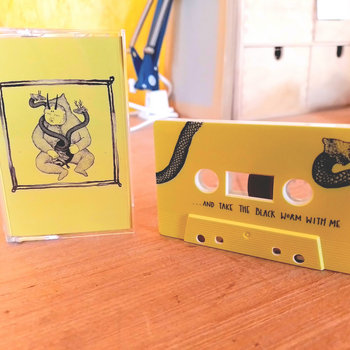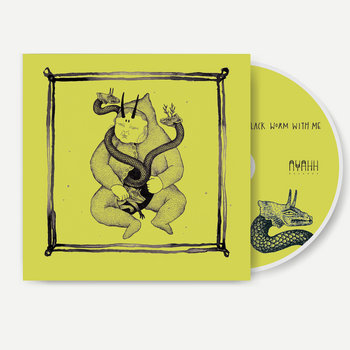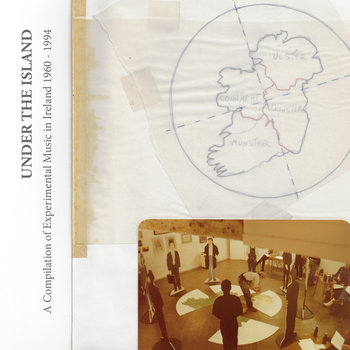
“They more or less had the same, what we call the same nyahh, and the same style.”
–Joe Heaney, Sean-nós singer
As mentioned elsewhere on Bandcamp Daily over the years, Ireland and its musical culture inhabits a curious place in the wider panorama. A small outpost on the periphery of Western Europe, with its own fraught history and relation to the world, Ireland has developed enduring sonic traditions and idiosyncrasies with each generation’s incremental experimentation.
Ireland’s living tradition has followed its custodians across the world, from penal colonies to coffin ships to generational memory. Much as they did at home, Irish folk musics weathered the onslaught of repression, erasure, and stagnation, slowly taking on the character of the places where they took root, in turn widening their scope and expanding on their story. New musical movements have sprung from that peripheral position, from rock ‘n’ roll’s belated mid-’60s arrival on Irish shores to the ways in which hip-hop and electronic dance music forms manifested themselves from the ‘80s onward.
More recently, pop phenomenon CMAT’s early character work as a Dublin-specific Dolly Parton auntie explores the worlds of camp and hyper-femininity with recognizably Irish humor. Acoustic rockers The Scratch’s detour through a decade of metalcore groove under the name Red Enemy brought moshpit-ready throwdowns—and a major-label deal. The much-loved and lauded second folk revival of recent years has seen the modernizing and academic work of artists like Lankum and John Francis Flynn bring the tradition to new prominence, while the music of Limerick-based scratchologist Andy Connolly, the former Naive Ted, wrangles composerly explorations of folk, classical, and avant-garde forms from a pair of turntables, a laptop, and his own boom-bap and techno sensibilities.



Vinyl LP

Somewhere amid these developing identities in contemporary and underground Irish music lies County Leitrim-based DIY label Nyahh Records, an outpost for outsider music, in all of its forms, on the fringes of rural Ireland.
“I thought a lot before I decided to start this label, and I was like, ‘How do I make it different from other labels?’” says musician, sound-maker, DJ, and Nyahh Records founder Willie Stewart. “Because I could be putting out records all year without really thinking about it—but they’ve got to have the nyahh. That’s the most important thing; if there’s no soul or originality to it, I’m not really interested in it. Originality and uniqueness is what really makes me want to put music out, y’know?”
Stewart is an amiable fellow, passionate, and literate about Irish-made music. Named after a term for the intangible feeling or spirit of a piece of music, Nyahh has become a consistent source of, and seal-of-approval for, a vast array of sounds in recent years, self-describing as a “home for sound collectors, noise makers and music builders.” The label is home to the solo work of Stewart and partner Natalia Beylis, as well as intrepid sonic explorers like cellist Eimear Reidy and Lankum’s Ian Lynch in his One Leg, One Eye guise. The label’s burgeoning reputation, aided by shouts out from the likes of The Guardian, has been a springboard for Stewart’s mission of shining a spotlight on widely-ignored corners of music and sound practice, winning new admirers among the faithful and eternally curious.
“I was doing a smaller label just before this, called Hypnagogic Tapes, that was putting a lot of international acts, mostly on cassette tape and CD-R,” Stewart says. “But then I decided I wanted to change it, and basically start anew, try and put out vinyl and proper-quality CDs and cassettes, so I got the money together to do that. The idea is to explore the more experimental side of Irish music and culture. I’m really confused about how we’ve had Beckett, Joyce, Flann O’Brien, all these surrealists and incredible avant-garde writers, but we don’t have a history of sound poetry or, y’know, experimental writing that’s come into our underground.
“The legacy of that incredible, rich culture–extreme for the time, y’know–doesn’t really seem to have rubbed off on contemporary musicians. Like, there’s just not an awful lot of experimental music in Ireland. But there is some, and my aim is to try and find it and help to give it a voice and a platform and get it out into the world.”




Cassette, Vinyl LP, Compact Disc (CD)




With no given remit to fulfill other than the pursuit of the nyahh itself, the label has flitted between the outer edges of tradition and the contemporary moment. Stewart’s own musical history takes in a similarly panoramic frame of reference. Perhaps best-known to well-seasoned Irish moshers as part of ‘90s alt-rock outfit Bambi, in the late 2000s he co-founded Woven Skull, a three-piece whose hypnotic, rhythm-focused slant on psych-folk draws equally from the heart of Irish tradition and Irish counter-culture.
Stewart’s—and by extension, Nyahh’s—position between these worlds, has resulted in his curating of a pair of intriguing archival compilations released via Bandcamp and on limited-run CDs documenting the histories of these two disparate strands of music in Ireland, unearthing parallels and connections in the process.
Taking inspiration from the song collection work of ethnomusicologist Alan Lomax, A Collection of Songs in the Traditional & Sean-Nós Style, released in July of 2023, brings together the work and voices of two generations of singers in the long-standing sean-nós (pronounced “shan-noas,” Irish for “old-style”) tradition, drawing equally from previously-released records and off-the-cuff smartphone recordings. A portion of the download sales will go to CATU, a community union for renters, social-housing tenants, mortgage-holders, and people in emergency and precarious living situations in Ireland.
“It wasn’t an archival project and nothing’s posthumous, so I didn’t approach it in that way. I just wanted to capture people that were currently singing sean-nós,” says Stewart. “Everybody on there is still alive and singing. I wanted to bring them into my world from their world. Their world is underground as well, but I wanted to bring this music into my underground world, so it’d be accessible to curious listeners.”
A style of unaccompanied song noted for long melodic phrases, ornamentations, and improvisation, sean-nós’s similarities to Middle Eastern and Mediterranean songforms have spurred ethnomusicologists and historians alike to speculate on connections between the maritime tradition of Ireland’s western province of Connacht, and ancient trade routes that brought it into contact with the seafaring cultures of North Africa and Spanish Armada shipwrecks.

Compact Disc (CD)

“I see parallels between sean-nós singing and what everybody now seems to be obsessed with, which is drone music,” says Stewart. “Drone music is a new, fashionable thing, but people have been making drone music forever. It’s the earliest sound that we have. It’s the first thing we hear. It’s what we hear in our mother’s womb. It’s the sound of the Earth, and so many indigenous cultures have that—and they’re usually cultures that have been colonized at some point.”
A Collection of… is a beguiling point of entry to that world: Connemara woman Sarah Ghriallais’s mournful 1987 rendition of emigration song “An Sceilpín Draighneach” comes from the expansive archives of Irish culture non-profit Gael-Linn, while her son Michael Frank Ó Confhaola delivers an authoritative “Róisín Dubh.” Rosie Stewart’s lilting on drinking melody “Jug of Punch,” meanwhile, lends emphasis to another undercurrent of traditional Irish song.
The sounds of the world are audible throughout its live recordings: the murmur of audience at Dublin’s Cobblestone pub during Ruth Clinton’s “Lament of an Irish Mother,” the sound of wind chimes on opening track, Conor O’Kane’s “Harvest of Clovers,” a version of an Edgar Lee Masters poem that evokes the vibration of the earth. Eoghan Ó Ceannabháin’s soulful baritone on love song “Eileanóir na Rún” was recorded on his smartphone in the green room in Stiúideo Cuan, a music venue and cultural center in Spiddal, County Galway.
“A lot of the reason for doing the phones and the field recorders was because I just love the sound of them. We all have these devices in our pockets. Then also the convenience and immediacy of it; they could record the song, and then have it to me five minutes later,” Stewart says. “As a whole, this album is definitely an archival document. I wouldn’t have had the budget to send people into a studio, and a lot of these people wouldn’t have access to a studio either.”

Compact Disc (CD)

“Experimental music, and sean-nós, I see it together,” says Stewart. “It was almost like an experiment I did, to see if the experimental music world would engage and embrace this sound, and they have and I’m really happy with that.”
Later in the year, the label released Under the Island: Experimental Music in Ireland 1960–1994 with the aim of establishing an understanding of and drawing common threads between disparate and oftentimes isolated experimental artists and their practices from the 1960s onward. Without the benefit of a long-standing tradition and documentation of same, Stewart proceeded to inquire with surviving domestic pioneers in sound art, field recordings, and outsider composition, like artist, UCC professor, and Fluxus counterpart Danny McCarthy, in order to further his own understanding of the matter, and inform the running order and scope of the collection.
“When I first heard [the musique concrète of] Desmond Leslie, from the infamous Leslie family from Monaghan, those recordings he did in the late ’50s, early ’60s, I was like, ‘What the hell is this? There’s got to be more of this out there.’ I already knew some people who had been active from the early ’80s on, so I just started asking them whether there was more, and they were like, ‘Not really.’ There weren’t very many sound artists active at that time, but I did find some.”

Compact Disc (CD)

Under the Island, like its counterpart, deals in recordings and source material influenced by materiality and technical restrictions. But the real joy for Irish music heads are the sights and sounds of respected and well-known names in the domestic arts canon at play.
Desmond Leslie would be regarded as a pioneer of electronic sound, along with other notoriety, with licensed library acetates of his work scoring early episodes of Doctor Who. The early work of Roger Doyle, now recognized as both a trailblazing composer and an unsung hero of Irish new wave as part of Operating Theatre alongside actor Olwen Foueré among others, is represented with a 1971 tape collage. A picture of McCarthy greets owners of the physical CD, wielding a camán or hurley (a stick used in the Gaelic game of hurling, traditionally fashioned from the wood of ash trees) festooned with strings and a pickup, a recording of which from the late ‘80s is present. Corkonian post-punk figurehead Giordaí Ua Laoghaire recontextualizes familiar tones and sounds in “An Pocaide,” a free-ranging solo improv piece met with perfectly cut golf-claps at its tail-end.
As one might imagine, the absence of aesthetic or geographical commonalities presented narrative challenges when assembling works from such a broad sweep of artists into a coherent, chronological order—a task done with the help of cultural commentator and VOX zine head Dave Clifford. “I don’t mean this in a reductive way, but they’re all outsiders. There was no scene built around what they did,” says Stewart. “It’s a unique album because…it’s pulling out stuff from a scene that wasn’t there.”

Compact Disc (CD)

“The Desmond Leslie recordings were actually recorded in the mid-‘50s,” Stewart continues. “That’s definitely the first music like that made by anyone with any affiliation to Ireland, as far as I know. 1994, that’s when personal computers became affordable to people. A lot of people bought computers and started making computer music. A lot of people that maybe were making sound art or experimental music fell into the trappings of beats. The only people on [Under the Island] that had access to a computer were Burning Love Jumpsuit, and I think only one of them had a computer. They would get together with all the recordings and samples, and basically just cut and paste everything. It was the early days of the personal computer, for artists anyway.”
Stewart says that these compilations are standalone endeavors that will live alongside current and future releases in the Nyahh catalog. His stated goal of pulling seemingly disconnected strands of documentation into the orbit of listeners is, in and of itself, an admirable act of service to an island stuck at the intersection of the Western world.
“The sean-nós one, I could be putting out compilations like that, from different aspects of traditional Irish music, forever,” he says. “The Under the Island comp, I just wanted to…I feel like we’re standing on this island, and we’re screaming and shouting to the rest of the world to say, ‘Look, we have work here, it has value, it’s good quality.’ I’m just very motivated about letting the world know that Ireland has a lot to offer.”







